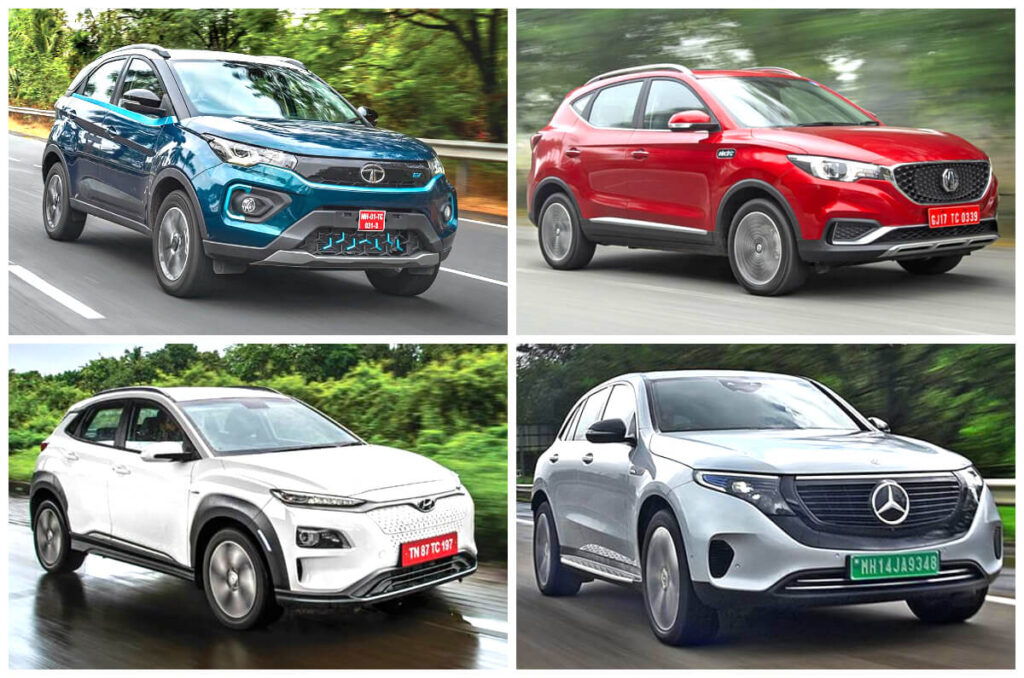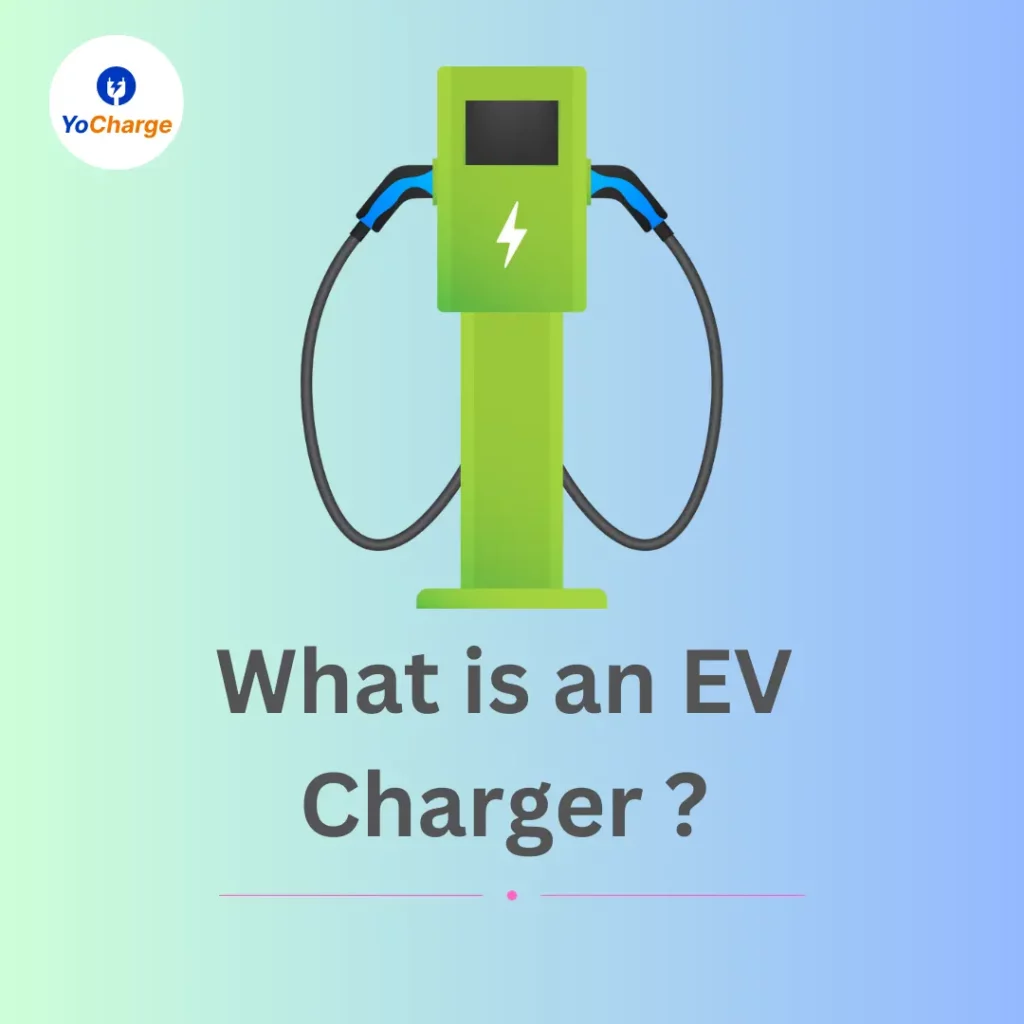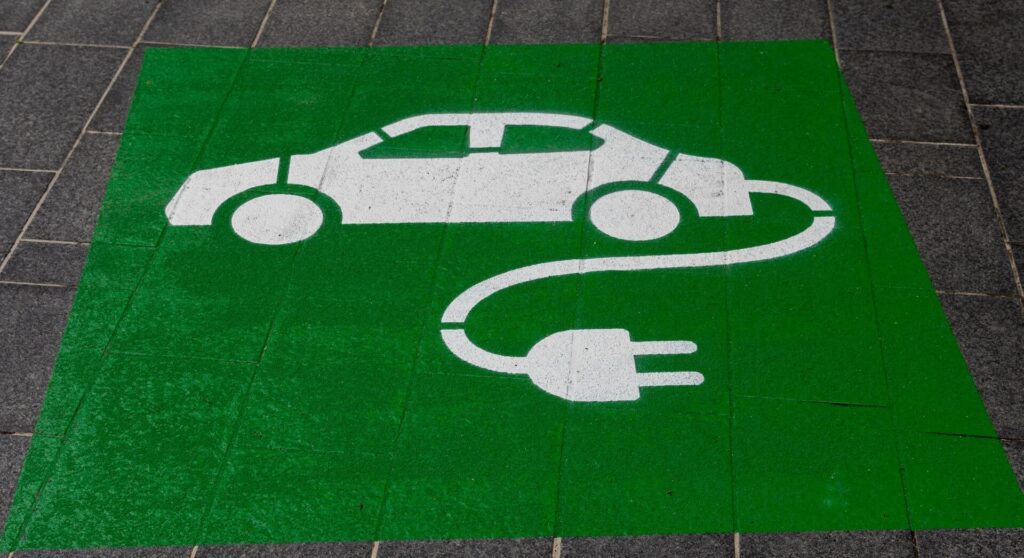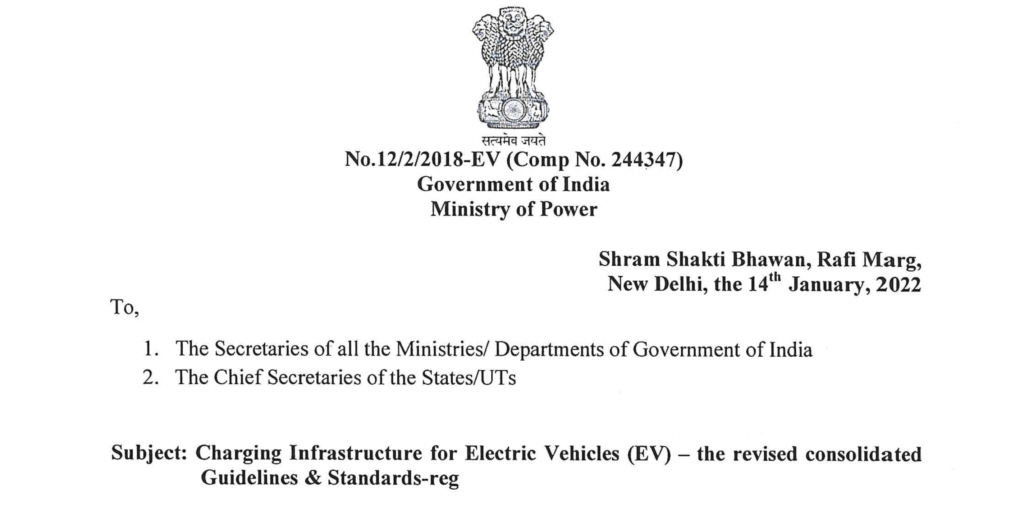
In India, 3,29,190 electric vehicles were sold in 2021, a 168 percent increase over the 1,22,607 units sold the previous year. In addition a 90 % combined market share. As there is an increase in electric vehicles in India, let us discuss the comparison of electric cars in India.
Table of comparison of electric cars in India (Battery capacity and range)
| Electric car | Battery Capacity (kWh) | Range (km) |
|---|---|---|
| Audi e-tron SUV and Sportback | 91 | 484 |
| BMW iX | 76.6 | 425 |
| BYD E6 | 80 | 400 |
| Hyundai Kona Electric | 39.2 | 452 |
| Jaguar I-Pace | 90 | 470 |
| Lexus NZ | 18.1 | 885 |
| Mahindra e2o | 16 | 120 |
| Mahindra eVerito | 18.55 | 140 |
| Mercedes-Benz EQC | 80 | 414 |
| MG ZS EV | 44.5 | 419 |
| MINI Cooper SE | 32.6 | 270 |
| Nissan LEAF | 40 | 364 |
| Porsche Taycan | 71.0 | 395 |
| Tata Nexon EV | 30.2 | 312 |
| Tata Tigor EV | 26 | 306 |
Other Factors in Range of Electric Vehicles
The range of an electric or hybrid vehicle is the distance it can drive before the battery needs to be recharged. An electric vehicle’s battery capacity is measured in kilowatt-hours (kWh). This rating indicates how much electricity the battery pack can store.
The range of an electric car depends on mainly on the battery capacity. It determines the amount of energy accessible to the motor and other vehicle components. The remaining range of an electric vehicle is thus determined by the amount of energy in the battery at any particular time. The range will be different for two different people driving the same car. Hence the actual range depends on various factors.
The range of an electric vehicle depends on the following factors:
1. Weight on the car (payload)
As the weight of the car increases, the energy required to displace it also increases. Hence the load given on the car, the number of passengers also affects the range. Manufacturers are using light weight materials to construct cars. Therefore, it helps in making the vehicle lighter.

2. Condition of tires
The maintenance cost of electric cars are much lower, as compared to conventional cars. Tires that are not inflated properly affects the car’s range. The regenerative braking, helps to reduce the tire wear. Rolling resistance, leads to pressure fluctuation in the tires. This further, increases the energy consumption.
3. Speed of the car
Driving at high speed affects the efficiency of the battery. Since, the electric motor has to do more work at higher speeds. The image below shows the relationship between range of electric cars and its speed.
4. Condition of battery
The range of an electric vehicle depends on the condition of the battery. As a result of repeated charging cycles, a type of wear is induced that reduces the battery’s capacity and thus the vehicle’s range over time. Hence, the capacity of the battery decreases with time.
Related Article: What causes Battery Degradation in Electric vehicles and How to avoid it?
Read More
5. Topography of road
The type of road you choose to drive, the inclinations, texture etc. affects the range. Driving up a steep incline or high roads on mountains makes the electric motor use a lot more energy. As a matter of fact, driving downhill, can recharge the battery as it makes use of regenerative braking. Therefore driving along flat roads can help in increasing the range. Smooth driving helps in increasing energy savings.
6. Cold weather
It is necessary for the EV batteries to maintain an optimal temperature. Very high and very low temperature affects the range. When the temperature is low, the electric car has to use the energy from the battery to heat up the car and equipment. During cold weather HVAC (Heating Ventilation Air Conditioning) is used that consumes additional energy. As a matter of fact, this is absent in conventional cars because, they use the natural byproduct from the engine to heat the car.

7. Wind
Headwind is the wind that blows in the forward direction. Hence, it opposes the forward motion of the vehicle. Higher the headwinds, the resistance the tires experience also increases. As a result, the motors have to use more energy to compensate this effect.



